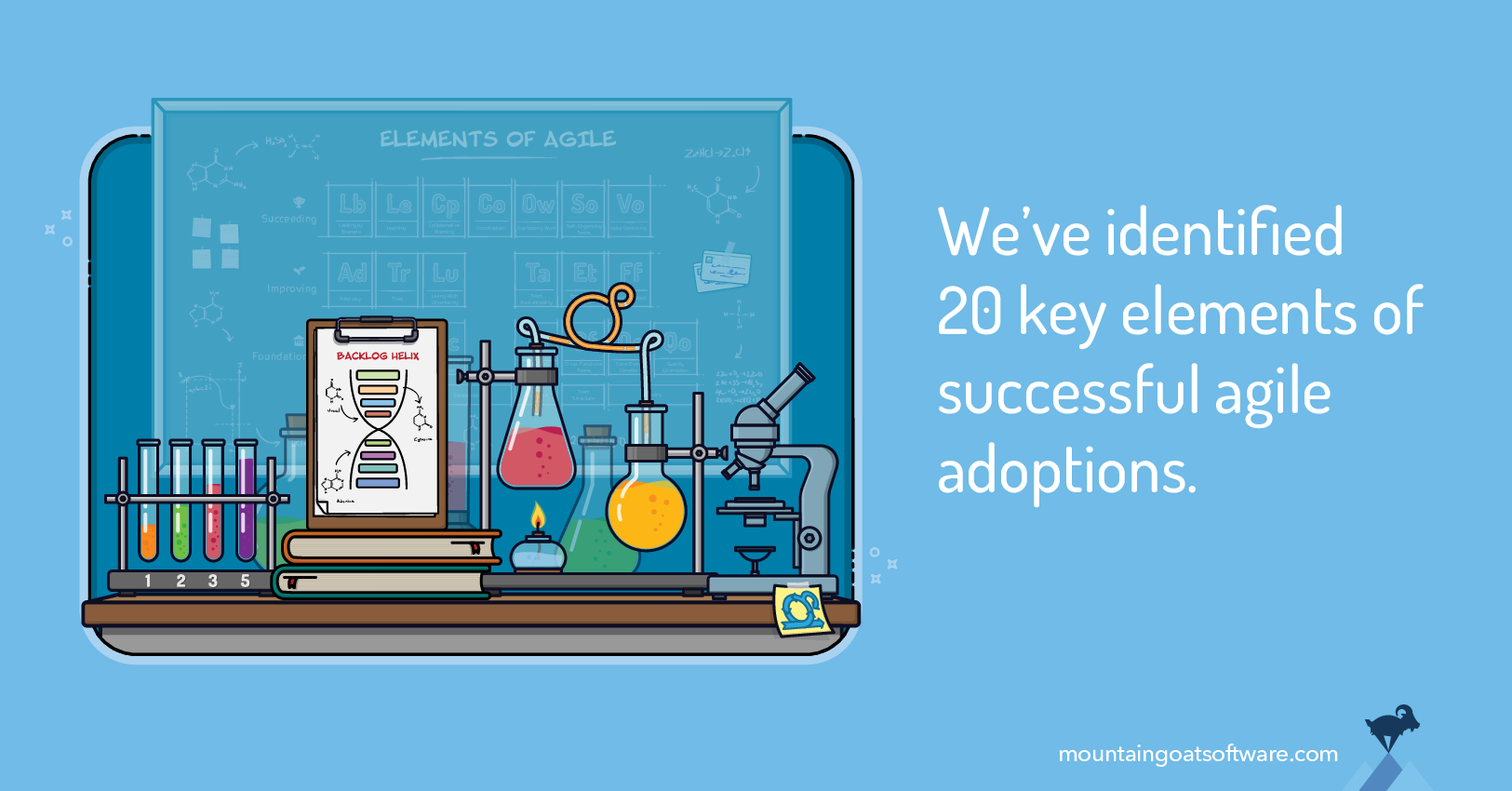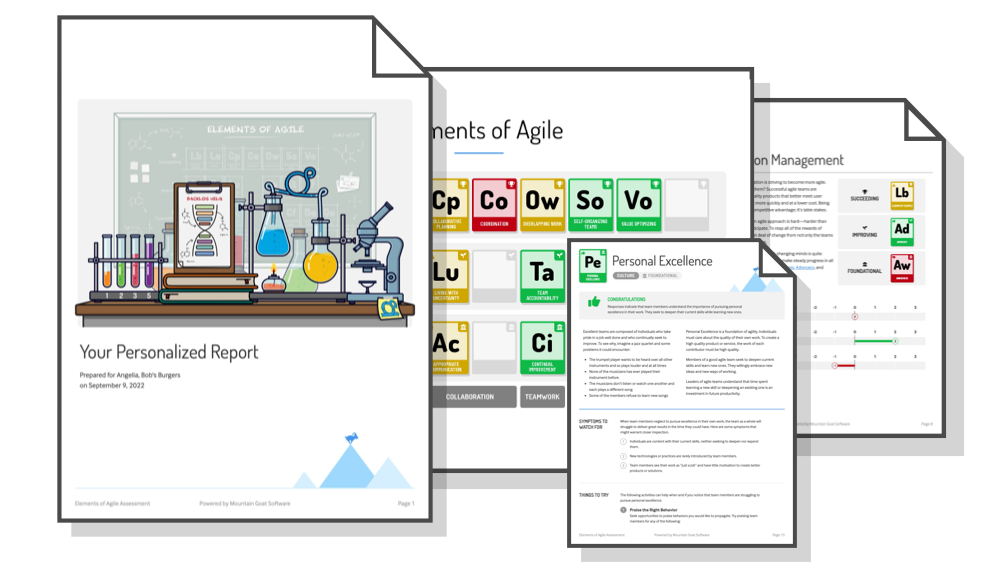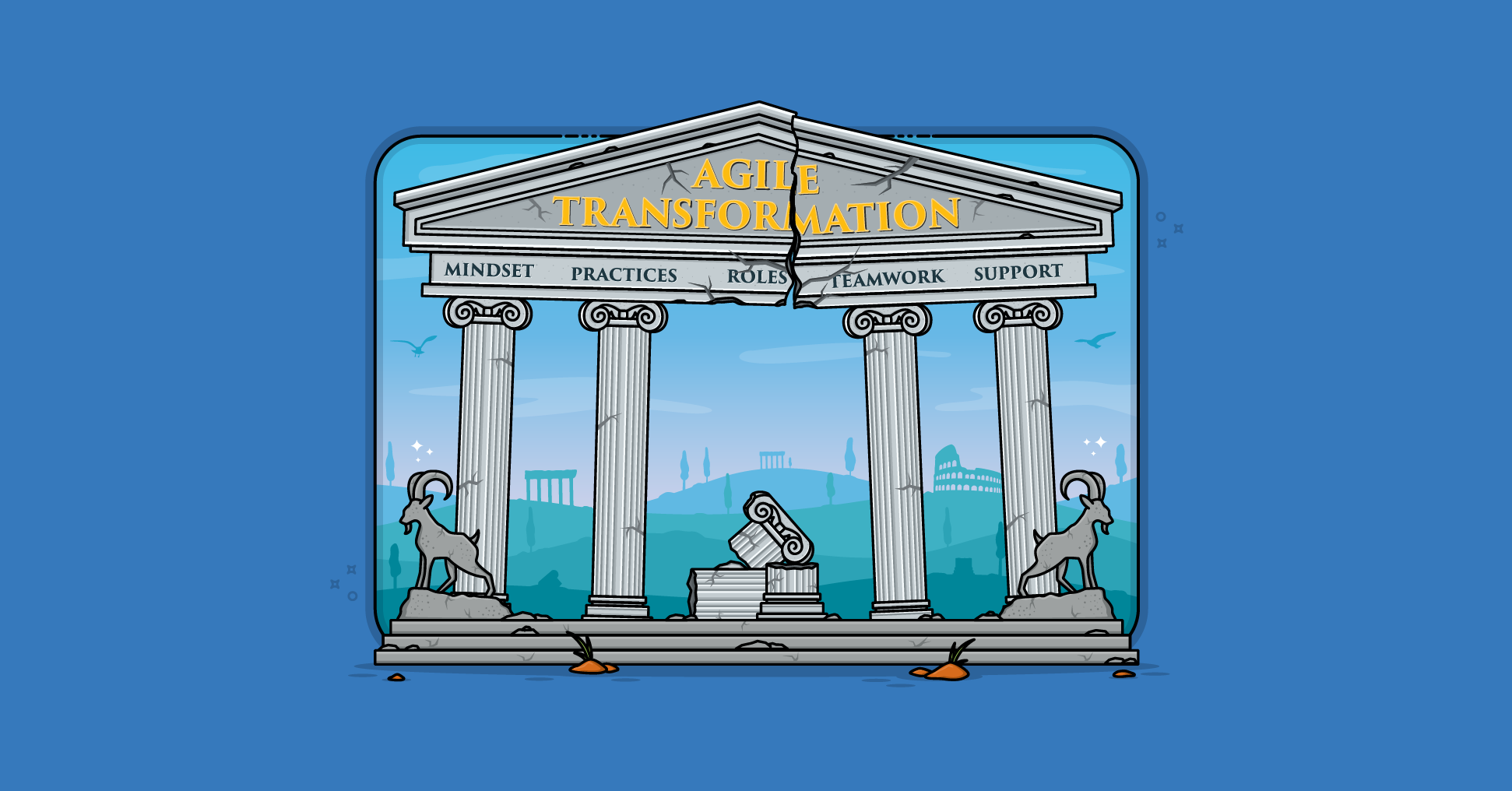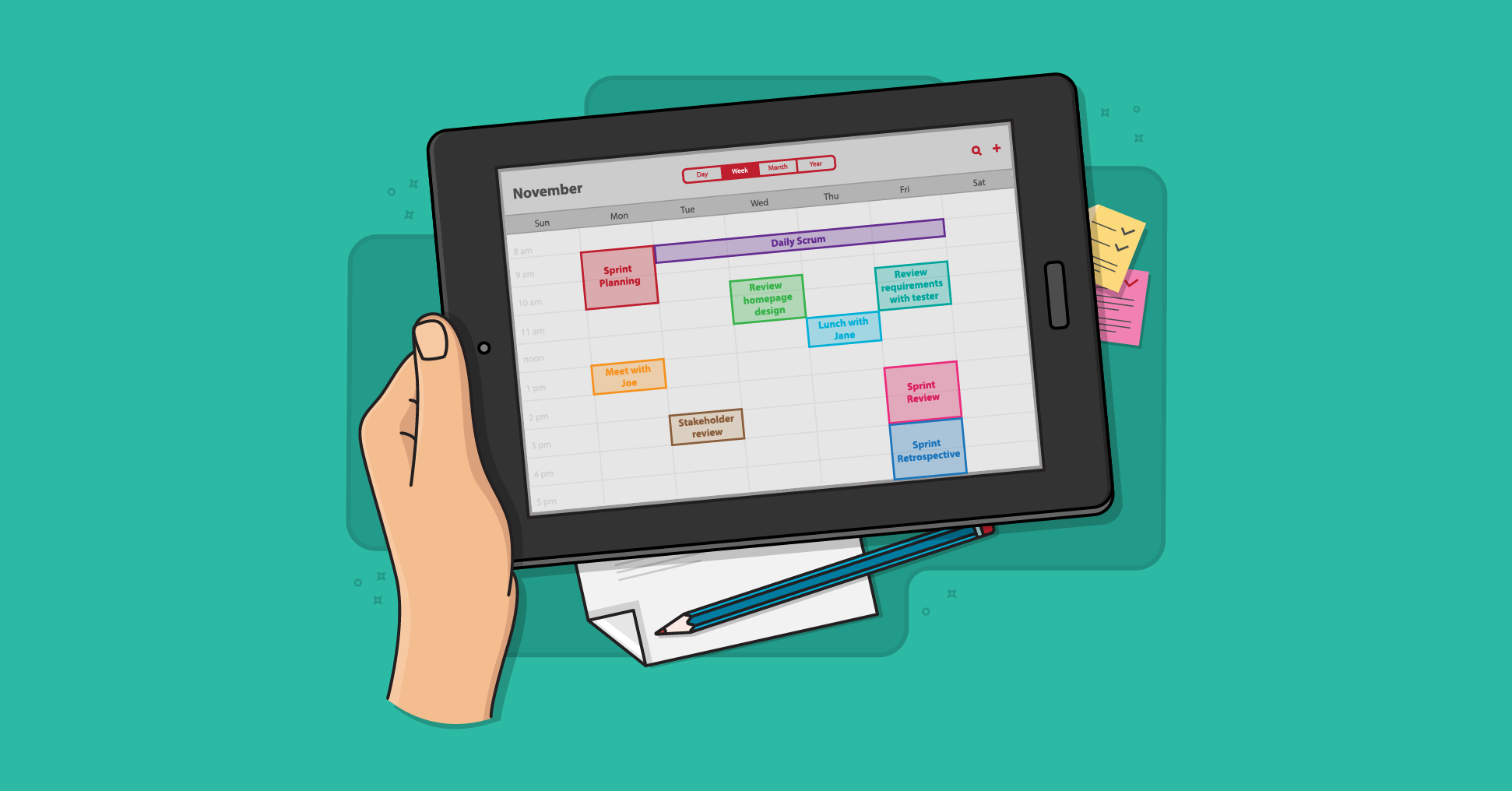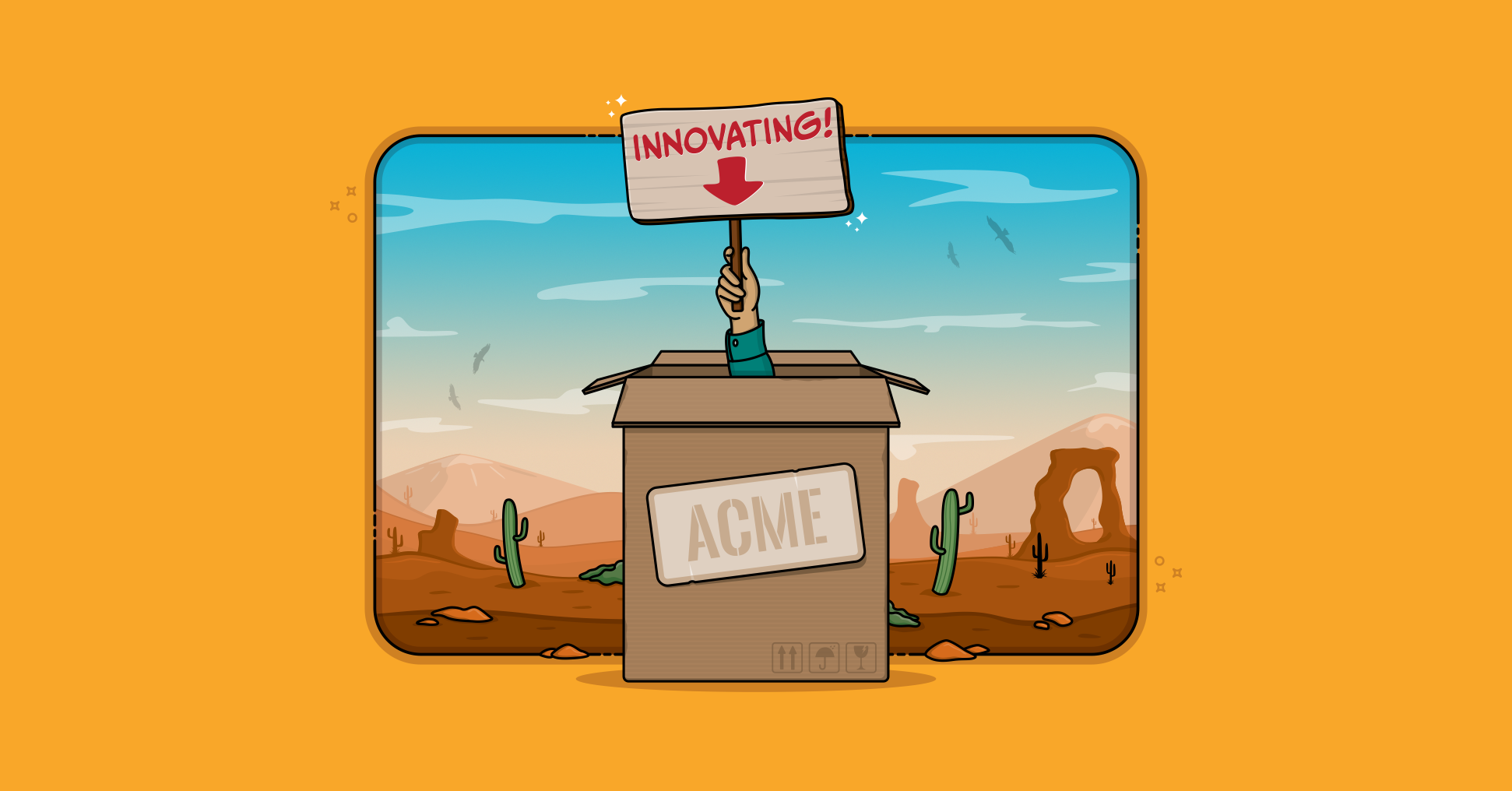No one ever said transitioning to agile is easy. At least no one who’s tried to create a more agile workplace has said that. Investing in business agility transformation is, however, very worth the effort. Studies have shown that adopting an agile framework reduces time to value, improves quality, increases employee job satisfaction, reduces risk, improves schedule predictability, delivers products that better match user expectations, and more.
I’ve been helping organizations transition to agile for multiple decades now. And while every agile adoption is different, there are certain commonalities I’ve noticed in successful agile improvement efforts. Together with my colleagues here at Mountain Goat Software, we have identified 20 key elements of agile transformations.
Collectively known as the Elements of Agile℠, the 20 Elements are shown in the illustration below.
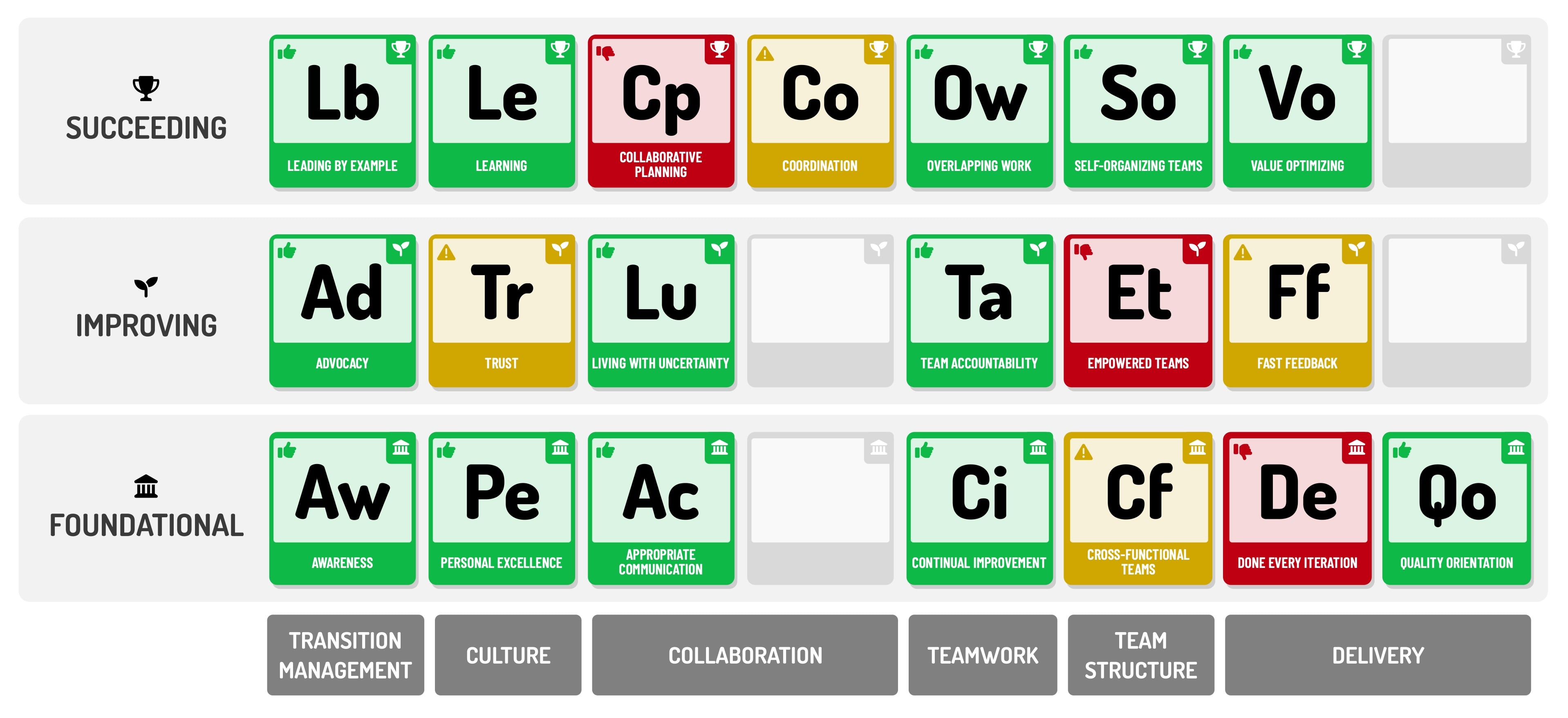
Elements, Categories and Levels
The twenty Elements are organized into six categories, which appear as columns in the illustration:
- Transition Management
- Culture
- Collaboration
- Teamwork
- Team Structure
- Delivery
Each Element in the table is color coded to indicate how well the team or organization is doing. Conventional stoplight colors are used. Red indicates an Element that needs attention. A yellow Element needs improvement. And a green icon needs to be maintained to stay where it is. Icons in the top left corner of each Element convey the same information in a more readable format for some.
Within each category are three levels. The Foundational level contains core Elements of Agile℠ development, which form the basis of any successful agile transformation. At this foundation are Elements such as cross-functional teams, a desire for continual improvement, and striving for personal excellence. Until these (and other Foundational Elements) are at least partially in place, you’ll find it challenging to make progress at the next level: Improving.
The Improving level is where the foundational elements of the agile mindset have taken hold and are starting to deliver real benefits to the organization. Elements at this level—such as increased team accountability and learning to live with uncertainty—build on Foundational Elements.
They also support Elements at the highest level, Succeeding. Once an organization starts to work in accordance with the Succeeding Elements, agile has begun to transform an organization. At this level an agile transition can be self-sustaining with each improvement encouraging further improvements.
Although the Elements are grouped in three levels (Foundational, Improving, and Succeeding), our experience is that some organizations can excel at higher level Elements without having mastered lowel level Elements. However, when seeking to improve or accelerate an agile transition, it’s generally best to be solid at lower Elements before seeking to improve at higher ones.
An Example Element: Cross-Functional Teams
As an example Element of Agile let’s consider the need for Cross-Functional Teams. Creating teams that can complete the work asked of them is foundational to being an agile organization. For this reason it is placed in the bottom row in the illustration.
When you look at the Team Structure category, you’ll see that Cross-Functional progresses to Empowered Teams (at the Improving level) and then Self Organizing at the level we’ve labeled Succeeding.
Although a different sequence is possible, we’ve chosen to stack these three Elements this way. We consider cross-functional teams the best starting point because it is often easier to convince leaders to change the structure of teams than it is to give teams more authority.
After teams begin to show benefits from having been organized cross functionally, leaders can be persuaded to grant teams more authority, allowing them to progress at the higher Elements within the Team Structure category.
Free Agile Transformation Assessment
Want some insight into how your team is doing, and how they can improve? If you would like to gauge how your team or organization is doing, and to think about agile in a fresh way, you can take the free Elements of Agile℠ assessment. After completing it, you’ll be emailed a 60+ page report that explains how you’re doing at each of the Elements of Agile℠. The report also includes advice on how to improve at each Element, which can improve your enterprise agility.
Click Here For Elements of Agile℠
Creating Your Improvement Backlog
We recommend you take an iterative approach to agile transformation change management. Use the advice in your customized Elements of Agile℠ report to create an Improvement Backlog. This is a list of changes you’d like to see in your team or organization. To start, pick one or two Elements on which to focus. For each, select one or two things from that Element’s Things to Try section in the report.
Let’s keep using the Cross-Functional Teams Element as an example. The Things to Try section for that Element advises:
- Get functional managers to buy into cross-functionality
- Identify and redress missing skills
- Assuage concerns that cross functional teams make everyone a generalist
- Broaden or shrink the team’s responsibilities
A portion of these things to try are also shown in the following illustration.
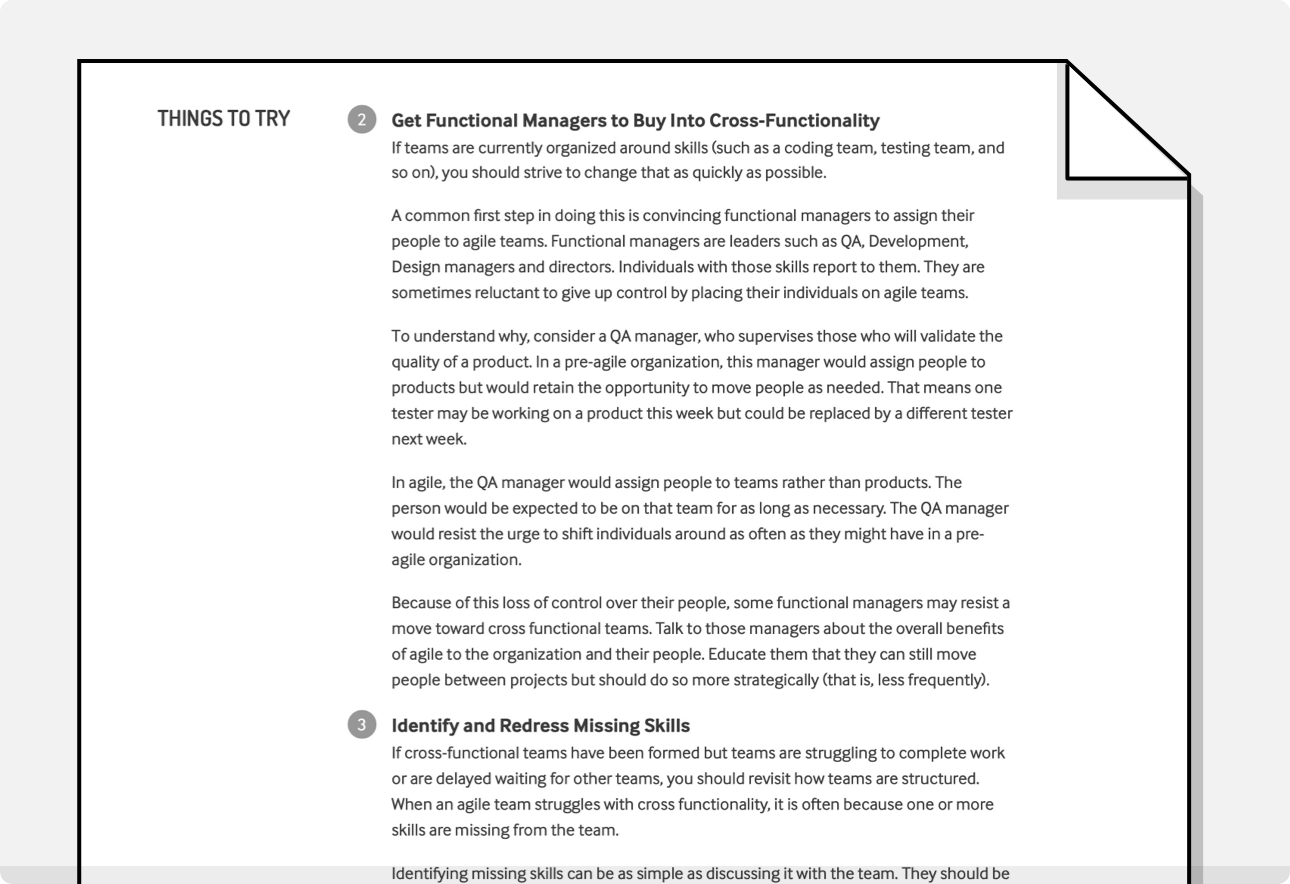
These items now form the beginning of your Improvement Backlog. From that backlog, commit to doing one or two new things in the next iteration. Because sometimes a change feels worse at first, consider repeating the change for a second iteration before evaluating its impact.
Add to your Improvement Backlog any time you want to try something else for an Element you’ve chosen to work on. You can also add to the Improvement Backlog any time you are ready to take on an additional Element.
If you’d like to take a deeper dive into any Element, the Elements of Agile℠ report includes a list of additional references for each Element. Each Element also includes a list of symptoms to beware of, as shown below. These can be used to keep an eye out for developing problems.
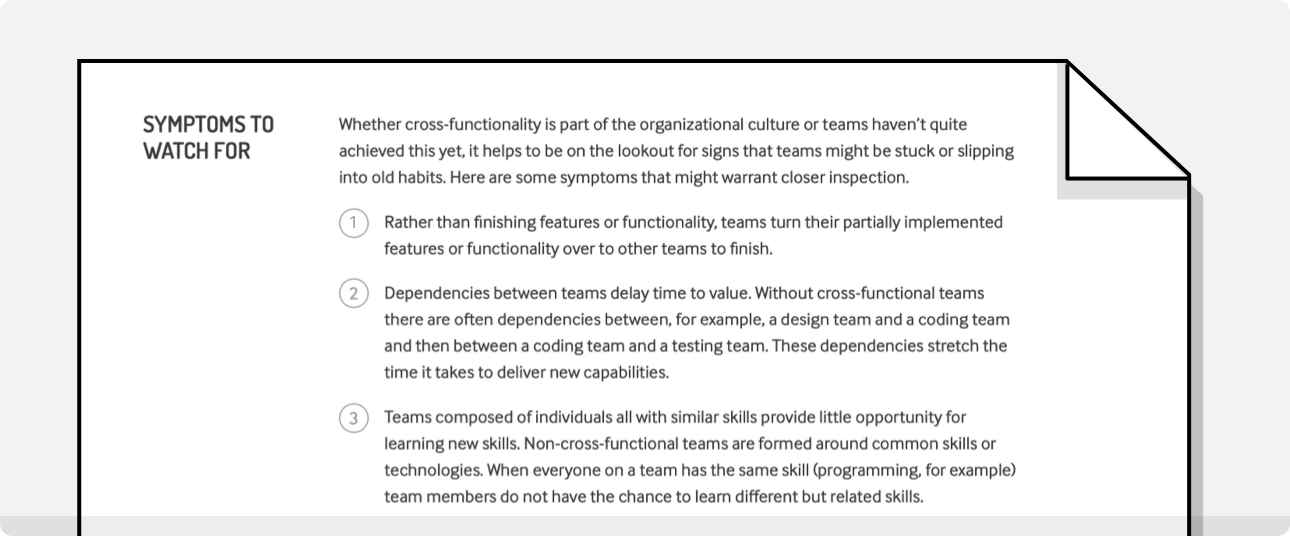
Is This an Agile Maturity Assessment?
No—we’re specifically avoiding calling this an agile maturity assessment. Maturity models (agile and otherwise) often oversimplify by ranking teams into specific numbered maturity levels. The meaning is that a team at maturity level four is better than a team at maturity level three.
Something as complex as becoming agile can’t be reduced to a numbered level. There are too many nuances: it would be like assigning a numerical value to human maturity.
I just Googled examples of human maturity–not holding grudges, being able to make and keep commitments, living by your values, and honoring your feelings. I think I’m mature based on those. But I also like The Three Stooges, enjoy Farrelly brothers movies, and might own a whoopee cushion. So I can’t possibly be at one overall maturity level.
Rather than creating an agile maturity assessment that reduces a team or organization down to a single value, we’ve taken the real-life approach that there are many elements a team needs to do well to become agile.
Last update: June 12th, 2025

